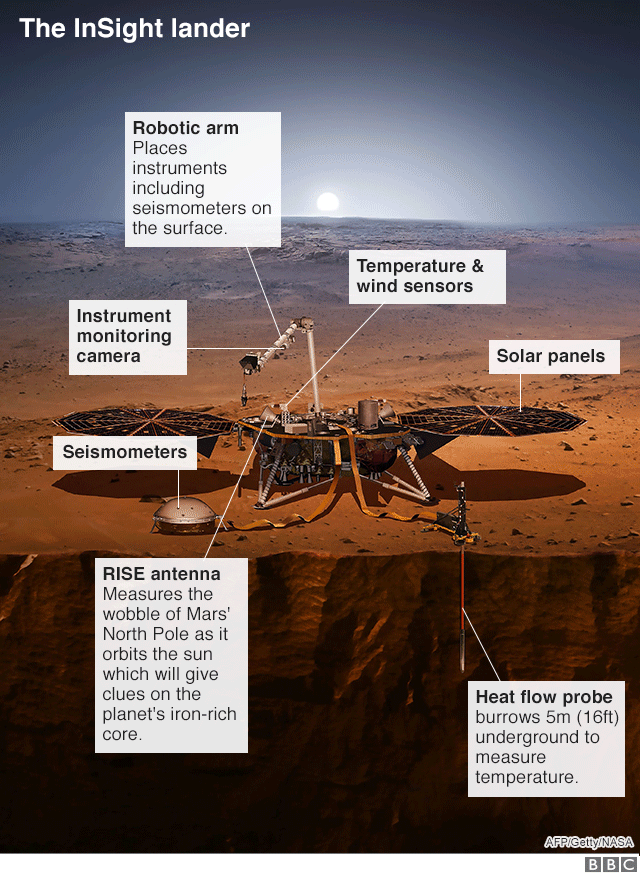Why in news?
NASA’s Mars InSight probe has reached its destination and touched down near the red planet’s equator.
What is the objective?
- InSight marks the 21st US-launched Mars mission.
- InSight (Interior Exploration using Seismic Investigations, Geodesy and Heat Transport) is on a 24-month mission.
- It will not be looking for life on Mars.
- It will study its insides as to what it is made of, how that material is layered and how much heat seeps out of it.
Why Mars?
- Earth and Mars used to be similar - warm, wet and shrouded in thick atmospheres.
- But this was before they took different paths 3.4 billion years ago.
- After the event, Mars stopped changing, while Earth continued to evolve.
- They turned out so different - Mars cold and dry, Venus and Mercury burning hot, and Earth hospitable to life.
- With InSight, Earth would thus be compared to Mars, to better understand how a planet’s starting materials make it more or less likely to support life.
- It is thus expected to study how Mars and other rocky worlds formed at the dawn of the solar system 4.6bn years ago.
- But notably, sending a probe to Mars, whether to land, orbit or fly past, is risky; only 40% of missions have succeeded so far.

How does it work?
- Landing site - The landing site is Elysium Planitia, where InSight can stay still and quiet all through.
- It is a vast, smooth lava plain that NASA calls “the biggest parking lot on Mars”.
- This featureless, and hopefully quiet, landscape is well-suited for the mission, to map the interior of the planet.
- Lander - The lander (6m × 1.56m, deck height 83-108 cm) carries a robotic arm 1.8 m long.
- The lander will use a set of instruments to study the makeup and dimensions of the planet’s core, mantle and crust.
- It is powered by two solar panels, and carries a seismometer, heat probe and a radio science experiment.
- Two complementary engineering cameras help with navigation and hazard avoidance.
- Satellites - Along with the spacecraft, a pair of mini satellites known as Mars Cube One, or MarCO also reached Mars.
- The satellites provided real-time updates of the spacecraft’s supersonic descent.
- Observation - From Earth, NASA team will be monitoring radio signals using a variety of spacecraft and even radio telescopes on Earth.
- Signals will come from various sources -
- the lander during descent
- two experimental briefcase-sized spacecraft called MarCOs that is flying behind InSight
- InSight itself after landing
- the Mars Reconnaissance Orbiter (MRO) spacecraft during descent
- the 2001 Mars Odyssey (Mars orbiter) after InSight’s touchdown
Source: Indian Express, The Guardian
